Did you know the average person living in the United States throws away about 4.5 pounds of trash per day?!? That adds up with a population of over 329 million people! A person named Rob Greenfield wore the garbage he produced and walked around NYC (watch the video here). Have you ever thought about how much we throw away or where “away” is?
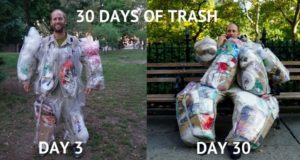
Where does our garbage go that is collected in Whatcom County?
Our garbage travels by truck and/or train over 400 miles to the Roosevelt Landfill (pictured below) or the Columbia Ridge Landfill near the Columbia River on the border between Oregon and Washington. How much fuel do you think that takes?
So once it leaves Whatcom County we don’t need to worry about it anymore, right?
Wrong.
Landfills
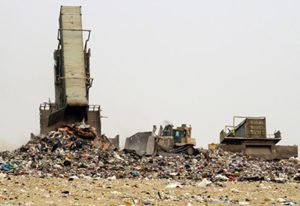
- Drastically slow down decomposition rates of garbage.
- Potentially pollute groundwater as toxic chemicals from waste that leaks into the soil.
- Destroy habitat in the creation of new landfills after old ones fill to capacity.
- Produce methane, a greenhouse gas 25 times more potent than carbon dioxide
Additionally, there is a large potential for garbage to escape and blow away, thus impacting animals that may think it is food and get sick or die. And most people agree they don’t want to live near a landfill, so once our landfills are full, where should we build a new one?
The good news is that once we have a deeper awareness of the environmental impacts associated with our waste and consumptive habits, it’s pretty easy and even fun to start making positive changes to divert waste from landfills in the first place. A good place to start is some of the “R’s” of zero waste. This week we will learn about reuse!
Upcycling: Converting used or discarded materials into something new.
There are many ways to reduce the amount of materials we send to the landfill each week, but reusing is one of my favorite ways because it involves creativity! It’s pretty simple. Before you throw away or recycle something, think to yourself, can I make it into something else or use it in a different way?
Everything, absolutely everything, we use or eat comes from the earth. Some resources are renewable such as trees used to make wood products, animals used to provide food or clothing, or the sun used to provide energy. Or they are non-renewable resources such as carbon-based fossil fuels like oil, fuel used to power most vehicles, and natural gas used to heat homes, minerals mined from the earth used to make cell phones, or water used to grow food, keep us clean and alive.
This week we will make an upcycling project! What can you do with an old egg carton? An old toothpaste tube? How about a glass jar? Try one or all of these upcycling projects at home. Take a picture of your creations and send them to us or tag us on Instagram (@resources_protects)!
DIY Project: Upcycled Dancing Fish
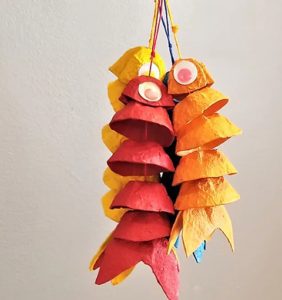
DIY Project: Upcycled Vase
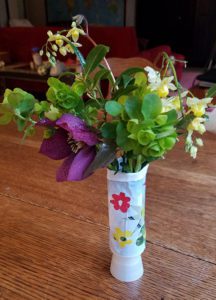
DIY Project: Upcycled Spring Flowers
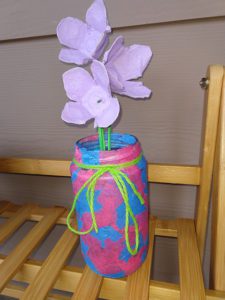
Can you think of other ways to REUSE?
- Donate your clothing and other textiles to second-hand stores, siblings, friends, or neighbors.
- Glass jars make containers for bulk food items like popcorn, snacks, or hot chocolate mix.
- Calendar pages can be used as envelopes for a letter.
- Old t-shirts can be used as rags to wipe the mud or grease off your bicycle.
- Plant vegetable seeds or herbs in a soup can.
Continue Learning!
There are lots of topics for you to choose from. Don’t stop here; move on to discover another lesson! New lessons uploaded each week.
